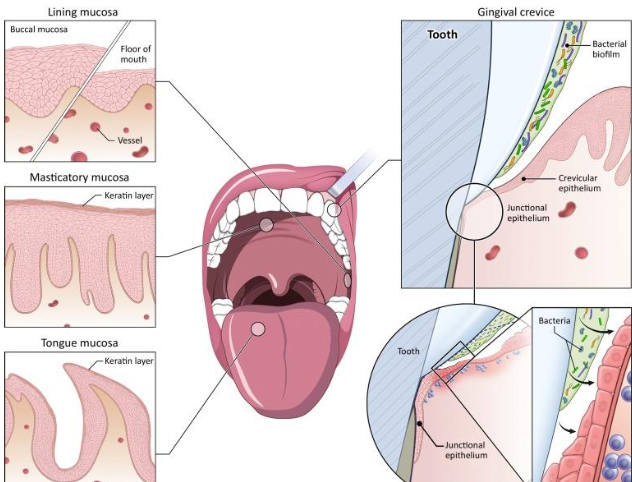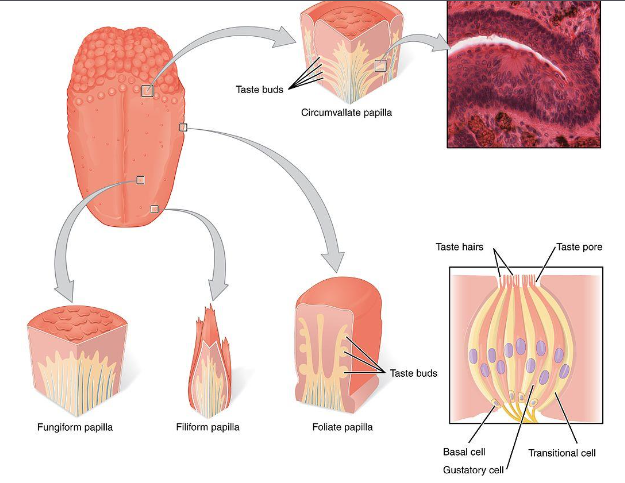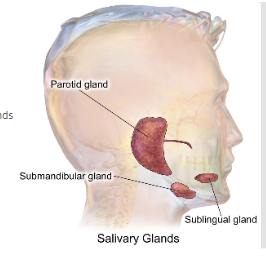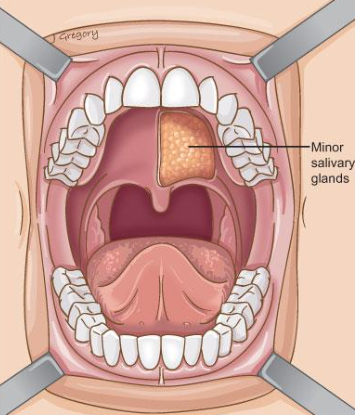Host Defense Mechanisms
1/35
There's no tags or description
Looks like no tags are added yet.
Name | Mastery | Learn | Test | Matching | Spaced |
|---|
No study sessions yet.
36 Terms
Objectives
List the four host defense mechanisms operational in the oral cavity.
Describe how the epithelium functions as a microbial barrier in the mouth.
Describe how an ideal dentition functions as a defense mechanism.
Describe the cycle of enamel demineralization and remineralizationand assess its presence in patients.
Evaluate caries treatment plans to include a medical model of disease prevention and nonsurgical treatment.
Identify early and late colonizers in bacterial plaque, and discuss their roles in the disease process.
Incorporate systemic assessments of host defense mechanisms into periodontal therapy.
Explain the significance of plaque pH.
Differentiate between cellular and humoral immunity.
Describe the role of granulocytes in host defense.
List the major salivary glands and functions of saliva.
Prescribe appropriate therapies for a patient with compromised salivary function.
Discuss the functions of the immunoglobulins.
Integrate concepts of host defense mechanisms into patient treatment plans.
Four defensive systems in the oral cavity
1) anatomic barriers
2) normal oral flora
3) saliva
4) immune system
Ideal dentition is naturally resistant to infection (true/false)
true
28 teeth
Class I occlusion
Healthy interdental papillae
Epithelium
oral epithelium is always wet
typically keratinized (resistant to water)
Junctional epithelium-bottom of pocket (sulcus); lacks keratinization and is most susceptible to bacterial invasion
Three main connective tissue/lamina propria:
lining, masticatory, specialized

Which part of the oral epithelium is most susceptible to bacterial invasion
junctional epithelium
Masticatory mucosa
-keratinized stratified squamous epithelium
-on the dorsum of the tongue, hard palate and attached gingiva.
Lining mucosa
nonkeratinized stratified squamous epithelium
found almost everywhere else in the oral cavity, including the:
• Buccal mucosa- inside lining of the cheeks and floor of the mouth
• Labial mucosa-inside lining of the lips and is
• Alveolar mucosa- lining between the buccal and labial mucosae. It is a brighter red, smooth and shiny with many blood vessels, and is not connected to underlying tissue by rete pegs
Mucosal epithelium:
• Highly vascularized
• Injury to area is met with immediate blood components
• Due to this healing occurs faster
Specialized mucosa
the taste buds on lingual papillae on the dorsal surface of the tongue that contains nerve endings for general sensory reception and taste perception

Normal oral flora
not all bacteria are bad
Factors determining whether disease occurs
Bacteria varieties
Metabolic characteristics
Interrelationship of bacteria
“The most variable factor in the pathogenicity of plaque colonies is
the makeup of the microbial population.”
some species discourage the attachment of other more pathogenic species
some species serve as a bridge to attach pathogenic bacteria to the cells
Which bacteria are responsible for caries formation?
S. mutans
Lactobacillus
Early colonizers are
S. mitis
S. sanguis
Acquired pellicle
acellular protein layer of saliva; forms a biofilm
Streptococcus organisms
Periodontal organisms
Early and late colonizers
Goal of preventive dentistry
selective encouragement of the right mix of bacteria
Saliva’s role
Homeostasis-ability to remain in balance and successfully resistant to challenges by chemical and bacterial agents
Salivary flow during sleep, and during food ingestion
The total amount of saliva secreted varies considerably between and within individuals
Saliva objectives
List the major salivary glands and functions of saliva.
Prescribe appropriate therapies for a patient with compromised salivary function.
Discuss the functions of the immunoglobulins.
Integrate concepts of host defense mechanisms into patient treatment plans.
Major salivary glands
parotid glands
submandibular glands
sublingual glands

Types of secretion
mucous and serous
Mucous
digestive and respiratory systems
protection
Serous
watery with lots of enzymes
protection
Parotid glands
Secretes serous water fluid that contains electrolytes
Low in organic substances
Secretes the majority of the sodium bicarbonate
Secretes majority of the amylase
Submandibular glands
secretes mixed serious and mucous fluid
Sublingual glands
secretes higher proportion of mucous
Minor salivary glands
Includes the following glands:
Palatal
Lingual
Buccal
Labial
Secrete mucous
Lubricate surfaces for improved mastication and function
Contribute fluoride to enhance caries resistance

(Major/minor) glands lubricate surfaces for improved mastication and function and contribute to fluoride to enhance caries resistance
minor glands
5 functions of saliva
chemical
lubrication
flushing/rinsing
antimicrobial
maintenance of supersaturation of calcium and phosphate ions
Which function is the most important in Saliva?
lubrication
Organic components of saliva
Amylase
Mucins
Phosphoproteins
Glycoproteins
Immunoglobulins
Composition and function
Unstimulated (Always present):
2/3 from submandibular
¼ parotid
1/20 sublingual
1/10 minor salivary glands
Moderate stimulation:
Submandibular and parotid secrete equal
Full stimulation:
Parotid has greatest output (1-2 mL per minute)
Functions at its best: when eating:
Cold weather
standing
Functions at its worst: sleeping:
Warm weather
sitting
Which salivary gland produces the most during unstimulated flow?
submandibular
Submandibular and parotid secrete equally during ____ stimulation
moderate
Which salivary gland secretes the most during full stimulation
parotid
Salivary flow functions at best during
eating
cold weather
standing
Salivary flow functions at its worst
sleeping
warm weather
sitting
Stimulated saliva occurs during
mastication
Unstimulated saliva occurs
when not eating